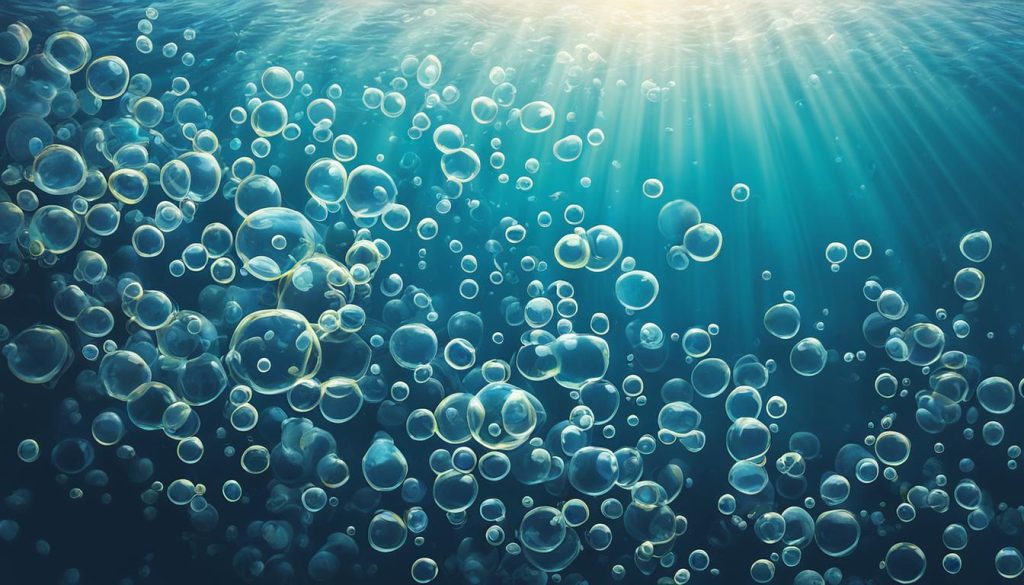As an avid explorer of the underwater world, I’ve always wondered about the mysterious ways in which marine creatures go about their daily lives. One question that has often crossed my mind is, “Do fish pee?” It may seem like a strange inquiry, but understanding the excretory system of fish is crucial for comprehending the intricate workings of our marine ecosystems.
Contrary to what one might assume, fish do indeed eliminate waste through a process similar to urination. Whether it’s the vibrant tropical fish in coral reefs or the majestic giants like blue whales, these aquatic beings release various amounts of urine, contributing to the nutrient cycle of our oceans.
In fact, blue whales, the largest creatures on Earth, expel hundreds of gallons of urine each day, redistributing vital nutrients from the deep ocean to the surface. While fish urine may not be on the same scale, it plays a crucial role in maintaining thriving ecosystems, particularly in coral reefs and coastal areas.
Underwater urination may not be a topic that comes up in everyday conversations, but it illustrates how interconnected marine life is and the importance of every organism’s role in the ecosystem. When fish release urine, they also release nutrients, minerals, and amino acids into the water, which are essential for the growth of coral reefs and oceanic vegetation.
However, human activities such as pollution, dumping, climate change, and overfishing pose a threat to marine life and reduce the overall impact of fish urine in the oceans. It’s vital that we understand and appreciate the delicate balance of nature to ensure the preservation of these aquatic mysteries.
Fish Excretion: A Unique Process
While it is commonly believed that fish excrete waste through urination like mammals, the reality is quite different. Fish have evolved specialized mechanisms for waste elimination that differ significantly from terrestrial animals. Fish predominantly excrete waste in the form of ammonia, which is released through their gills. Ammonia, a toxic compound, is filtered from the fish’s blood and expelled directly into the surrounding water, in a process different from mammalian urination.
Fish have kidneys that primarily regulate salt and water balance, rather than excrete waste. Some fish, like sharks and rays, have specialized excretion organs called rectal glands that excrete excess salt, enabling them to live in saltwater environments. There is a diversity in fish excretion methods, showcasing the adaptability of these aquatic creatures.
Understanding fish excretion is crucial not only for curiosity but also for understanding ecological implications. Excessive ammonia release from fish populations can impact water quality in aquatic ecosystems and affect other aquatic life.
| Fish Excretion Methods |
|---|
| Ammonia excretion through gills |
| Regulation of salt and water balance through kidneys |
| Excretion of excess salt through rectal glands (in some species) |
The Osmotic Nature of Fish Drinking and Salt Balance
Fish drinking water and maintaining a delicate salt balance are essential aspects of their biology. The process of osmosis plays a crucial role in water uptake and controlling salt concentration in their bodies.
In freshwater environments, fish have a higher concentration of salt in their bodies compared to the surrounding water. Through osmosis, water continuously enters their bodies, diluting the salt concentration. To prevent the depletion of salt content, freshwater fish excrete excess water through their kidneys in the form of urine.
On the other hand, saltwater fish face the opposite challenge. They have lower salt concentrations in their bodies compared to the ocean water. Osmosis causes these fish to continually lose water in an attempt to equalize salt concentrations. To compensate for water loss, saltwater fish drink water through their mouths and regulate their salt balance by excreting excess salt through cells in their gills.
When a fish drinks water, it is actually consuming very little water compared to the amount of water that surrounds it. The fish is able to take in water through its mouth and store it in its body without taking on too much water. This is because the fish’s body is constantly excreting salt and other dissolved minerals through the cells in its gills. The gills are lined with thousands of tiny blood vessels, and as the water flows over the gills, these blood vessels filter out the salt and other dissolved minerals. The filtered water then flows out of the gills and back into the surrounding water.
In this way, fish are able to regulate their salt balance and keep from taking on too much water. They are also able to get the fresh water they need to replace the water that they have lost through their gills.
Some fish, such as certain species of sharks, have a very high tolerance for salt and can actually live in saltwater without drinking any fresh water at all. These fish drink seawater and excrete the excess salt through their gills just like other fish. However, their bodies have evolved to be able to handle the high salt concentrations and they don’t need to drink fresh water to maintain their salt balance.
Other fish, such as certain species of rays and skates, have adapted to live in brackish waters, which are waters that are a mix of saltwater and freshwater. These fish are able to drink either fresh or salt water, depending on what is available, and they can also regulate their salt balance by excreting excess salt through their gills.
So, whether they live in freshwater or saltwater, all fish need to be able to regulate their salt balance in order to survive. And the best way for them to do this is by excreting the excess salt through their gills.

